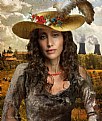|
|
 Michele Carlsen
{K:146013} 10/5/2006
Michele Carlsen
{K:146013} 10/5/2006
|
Dear Annemette ,
Thank you for such a good and interesting history lesson.. it was not wasted on me, nor I doubt Doyle or Nick... Much appreciation !
Michele~
|
|
|
|
 Juan Gonzalo Marcano Prieto
{K:14254} 10/5/2006
Juan Gonzalo Marcano Prieto
{K:14254} 10/5/2006
|
una toma muy cultural, excelente
|
|
|
|
 Doyle D. Chastain
Doyle D. Chastain
 {K:101119} 10/4/2006
{K:101119} 10/4/2006
|
Awesome Annemette - And thanks so much for this fascinating look . . . That paragraph would have made great reading in the 'about' section! I agree with you (as I said) that the color version is far superior and adds more to the shot. It's certainly fascinating!
Regards,
Doyle I <~~~~~
|
|
|
|
 Nick Karagiaouroglou
Nick Karagiaouroglou
 {K:127263} 10/4/2006
{K:127263} 10/4/2006
|
Thanks a whole lot for the historical information, Annemette! It brings much light into the happenings of that time and also of the scene of the play.
Indeed a hard dilemma. To deny the own identity for not risking to be taken over, or to keep it but facing the danger of being attacked?
Best wishes and thank you very much again again.
Nick
|
|
|
|
 Annemette Rosenborg Eriksen
{K:55244} 10/4/2006
Annemette Rosenborg Eriksen
{K:55244} 10/4/2006
|
THank a lot, Michele:-)
Here´s the explanation about this play which I also gave Doyle and Nick:
This photo was taken at the Nordic midsummerfeast where there are vikingplays every year.
This year it was about Harald Blåtand who was the vikingruler of the North in the 900th century a.c. For about twohundrede years munks like Willibrord and Ansgar had been sent to preach for the savages in Scandinavia without much luck. Most of the population laughed at them because in the North strength, being brave and the likes were virtues - not being humble and so forth so these munks couldn´t impress the vikings.
Some of the vikings did bring faith in the Christian God with them back home, but they usually blended this God with all the other Gods being very opportunistic and having a belief that was very closely connected to nature and the powers of nature.
Harald Blåtand agreed to be baptized in the late 900th century. The Church says that he was convinced by the power of the Christian religion because a munk went walking on burning coal.
Nevertheless a ruler from the German empire wanted to take over the North and was using the Nordic mythology and polyteism as an excuse for wanting to attempt this. Due to the nation´s security Haral Blåtand was baptized, so it was actually more a political strategic decision than a religious conversion.
The vikings actually hated the sound of churchbells and felt that their religion was the right one. For many years they kept on having Nordic mythology on their gravestones and in their lives. I don´t remember at what time the last viking/Daner was baptized, but the conversion took a long time.
The catholic church made sure to built churches on the former heathen burialgrounds and took the heathen sacred days and made them into Christian holidays.
I hope this helped to explain the play and a whole lot more:-))
Best wishes,
Annemette
|
|
|
|
 Annemette Rosenborg Eriksen
{K:55244} 10/4/2006
Annemette Rosenborg Eriksen
{K:55244} 10/4/2006
|
Dear Doyle
I did make this in B/W-tones, but I think that the colours have meaning to the play.
This photo was taken at the Nordic midsummerfeast where there are vikingplays every year.
This year it was about Harald Blåtand who was the vikingruler of the North in the 900th century a.c. For about twohundrede years munks like Willibrord and Ansgar had been sent to preach for the savages in Scandinavia without much luck. Most of the population laughed at them because in the North strength, being brave and the likes were virtues - not being humble and so forth so these munks couldn´t impress the vikings.
Some of the vikings did bring faith in the Christian God with them back home, but they usually blended this God with all the other Gods being very opportunistic and having a belief that was very closely connected to nature and the powers of nature.
Harald Blåtand agreed to be baptized in the late 900th century. The Church says that he was convinced by the power of the Christian religion because a munk went walking on burning coal.
Nevertheless a ruler from the German empire wanted to take over the North and was using the Nordic mythology and polyteism as an excuse for wanting to attempt this. Due to the nation´s security Haral Blåtand was baptized, so it was actually more a political strategic decision than a religious conversion.
The vikings actually hated the sound of churchbells and felt that their religion was the right one. For many years they kept on having Nordic mythology on their gravestones and in their lives. I don´t remember at what time the last viking/Daner was baptized, but the conversion took a long time.
The catholic church made sure to built churches on the former heathen burialgrounds and took the heathen sacred days and made them into Christian holidays.
I hope this helped to explain the play and a whole lot more:-))
Best wishes,
Annemette
|
|
|
|
 Annemette Rosenborg Eriksen
{K:55244} 10/4/2006
Annemette Rosenborg Eriksen
{K:55244} 10/4/2006
|
Dear Nick
This photo was taken at the Nordic midsummerfeast where there are vikingplays every year.
This year it was about Harald Blåtand who was the vikingruler of the North in the 900th century a.c. For about twohundrede years munks like Willibrord and Ansgar had been sent to preach for the savages in Scandinavia without much luck. Most of the population laughed at them because in the North strength, being brave and the likes were virtues - not being humble and so forth so these munks couldn´t impress the vikings.
Some of the vikings did bring faith in the Christian God with them back home, but they usually blended this God with all the other Gods being very opportunistic and having a belief that was very closely connected to nature and the powers of nature.
Harald Blåtand agreed to be baptized in the late 900th century. The Church says that he was convinced by the power of the Christian religion because a munk went walking on burning coal.
Nevertheless a ruler from the German empire wanted to take over the North and was using the Nordic mythology and polyteism as an excuse for wanting to attempt this. Due to the nation´s security Haral Blåtand was baptized, so it was actually more a political strategic decision than a religious conversion.
The vikings actually hated the sound of churchbells and felt that their religion was the right one. For many years they kept on having Nordic mythology on their gravestones and in their lives. I don´t remember at what time the last viking/Daner was baptized, but the conversion took a long time.
The catholic church made sure to built churches on the former heathen burialgrounds and took the heathen sacred days and made them into Christian holidays.
I hope this helped to explain the play and a whole lot more:-))
Best wishes,
Annemette
|
|
|
|
 Doyle D. Chastain
Doyle D. Chastain
 {K:101119} 10/4/2006
{K:101119} 10/4/2006
|
Annemette:
Love this one! Very cool capture and the looks and natural feel is so very striking. Like the rest . . . I'd dearly love to hear more information about it. I took the liberty of desaturating this to check it out in B&W since I think it makes that transition VERY well . . . but on looking . . . it seems to me as though the color has so much more to offer!! I DO think it should be tipped at least 4 degrees . . . to level it . . . (See attached) - but wow!! This is really cool!
Regards,
Doyle I <~~~~~
(King of Cool)
|

4 Degree Tilt and B&W (For your consideration) |
|
|
|
 Michele Carlsen
{K:146013} 10/4/2006
Michele Carlsen
{K:146013} 10/4/2006
|
I like this one Annemette !!! it's got everything in it! It must be a play ???
The Vikings do look 'Great' ...the young man behind them must have just blinked ( bummer) and the boy with the apple looks like he wants the Vikings boots !!!
Oh and the light is great, the color and clarity perfect , a different and interesting composition... I really do like it !!!
Best Wishes,
Michele~
|
|
|
|
 Nick Karagiaouroglou
Nick Karagiaouroglou
 {K:127263} 10/4/2006
{K:127263} 10/4/2006
|
Very interesting capture. Was that a theater play? I can imagine a draqmatic scene, a discussion about something important, something that could affect many lifes. The two men in the foreground are talking in that kind of excitement that an unexpected message causes.
But it is the third man in the background that captures the attention, as he seems to be thinking while he is looking at tomorrow's consequences out of today's decisions. Somebody that prefers silent thoughts rather than dramatic rhetorics? Somebody that carries the weight of a decision? A King? A wise man? Perhaps both? He could be just anybody but on this scene he is the King!
I would have prefered that a bit more dark, enhancing the importance of the scene and the profiles of the characters. At least for "the King" the light is much too strong, but perhaps I am only taken astray by suggestive thinking.
Any chance for more info about the photo, Annemette? And perhaps some more scenes, if possible?
Well done, and keep up!
Nick
|
|
















